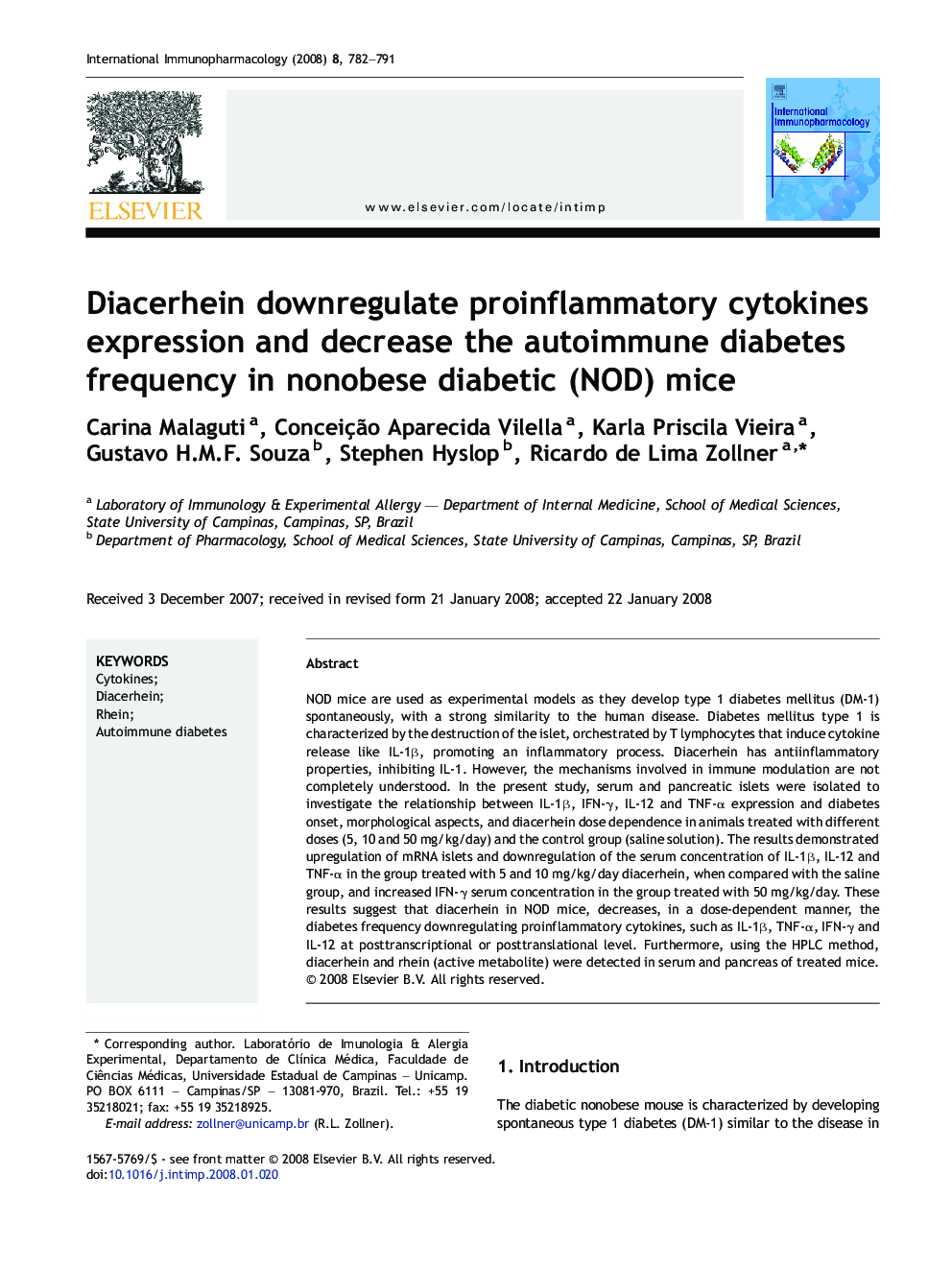| Article ID | Journal | Published Year | Pages | File Type |
|---|---|---|---|---|
| 2541508 | International Immunopharmacology | 2008 | 10 Pages |
NOD mice are used as experimental models as they develop type 1 diabetes mellitus (DM-1) spontaneously, with a strong similarity to the human disease. Diabetes mellitus type 1 is characterized by the destruction of the islet, orchestrated by T lymphocytes that induce cytokine release like IL-1β, promoting an inflammatory process. Diacerhein has antiinflammatory properties, inhibiting IL-1. However, the mechanisms involved in immune modulation are not completely understood. In the present study, serum and pancreatic islets were isolated to investigate the relationship between IL-1β, IFN-γ, IL-12 and TNF-α expression and diabetes onset, morphological aspects, and diacerhein dose dependence in animals treated with different doses (5, 10 and 50 mg/kg/day) and the control group (saline solution). The results demonstrated upregulation of mRNA islets and downregulation of the serum concentration of IL-1β, IL-12 and TNF-α in the group treated with 5 and 10 mg/kg/day diacerhein, when compared with the saline group, and increased IFN-γ serum concentration in the group treated with 50 mg/kg/day. These results suggest that diacerhein in NOD mice, decreases, in a dose-dependent manner, the diabetes frequency downregulating proinflammatory cytokines, such as IL-1β, TNF-α, IFN-γ and IL-12 at posttranscriptional or posttranslational level. Furthermore, using the HPLC method, diacerhein and rhein (active metabolite) were detected in serum and pancreas of treated mice.
